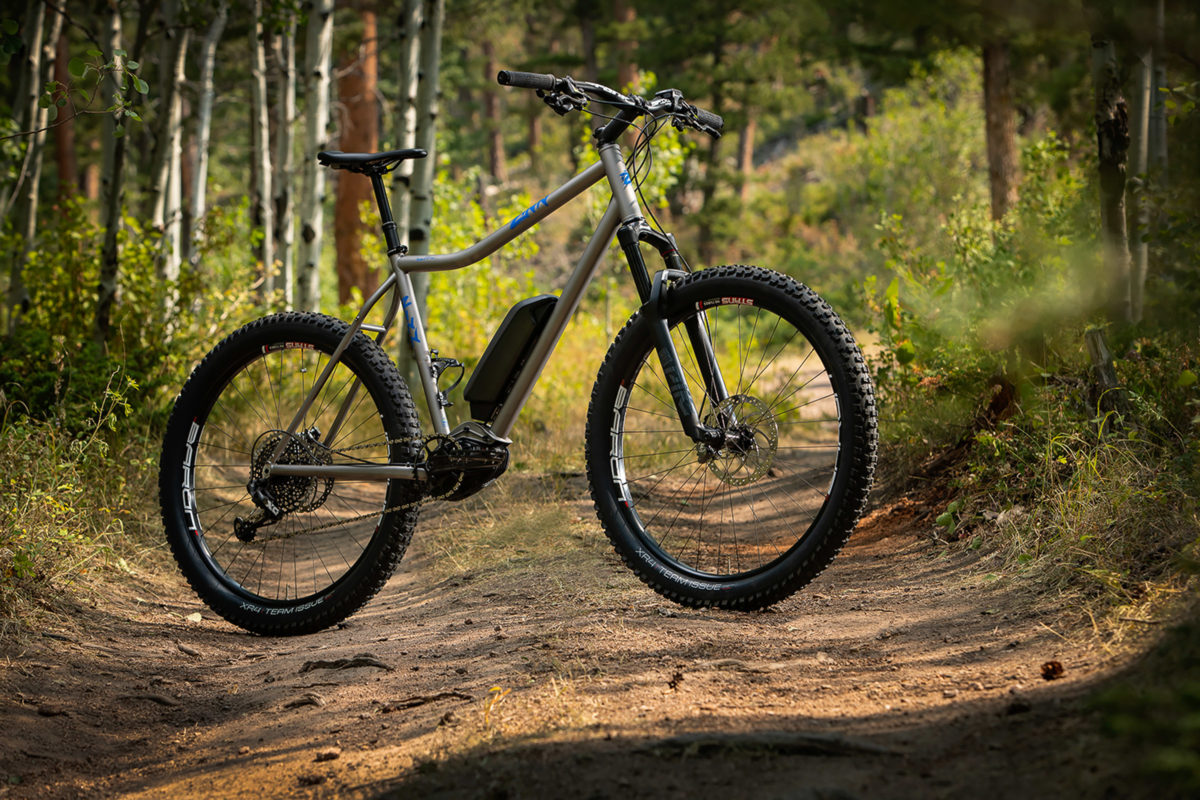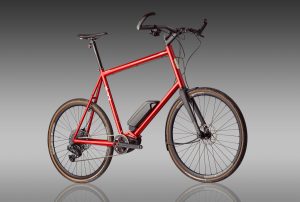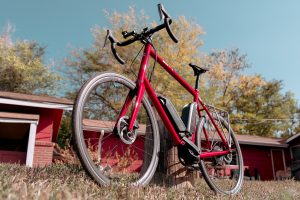How Electric Bikes Work & More!
When you think of an electric bike, you might be visualizing people zipping up and down roads and bike paths without pedaling. But electric bikes cover a wide array from utility e-bikes with a throttle to subtle, pedal-assisted e-bikes that are almost indistinguishable in appearance from “analog” bikes.
With an e-bike, no ride is too steep or too long to complete. Even as an athlete, an e-bike can enhance your riding experience and completely change the way you work out. If you’re considering an e-bike, but you want to learn more before you commit, check out this blog for information on how electric bikes work, their various benefits, and customization options today!
Electric Bike History
Before discussing how electric bikes work, let’s explore their history, which goes back a lot further than you might think! The first e-bikes ever documented were designed in the 1880s in both the United States and France. These contraptions were motor-powered and controlled by hand-held levers instead of pedals. By 1895, the United States awarded Ogden Bolton Jr. a patent for a battery-powered bicycle. How this electric bike worked was with a hub motor that was mounted inside the rear wheel, as well as a battery on the frame, just as many modern e-bikes!
Many inventors took Bolton’s concepts and developed them into the modern e-bikes we know today. One such inventor was Hosea W. Libbey, who designed a bike with a double electric motor that’s very similar to the mid-drive motors used in most bikes today.
How Electric Bikes Work

For the electric bike explained, here’s the most critical e-bike info: how do electric bikes actually work?
On its most basic level, an e-bike has an electric motor and a battery that add power to the bike. e-bikes are divided into four categories, from Class 1 to Class 4.
- Class 1 and 2 e-bikes, or low-speed e-bikes, receive no motor assist above 20mph, with Class 1 e-bikes being pedal-assist only (the motor doesn’t turn on unless the rider is pedaling).
- Class 2 e-bikes have a throttle to control the motor output and so don’t require pedaling.
- Class 3 e-bikes are pedal-assist only, with motor assist up to 28mph.
- Class 4 e-bikes have throttles and are not permitted for road use, with top speeds greater than 28mph and motor output exceeding 750W.
At Zinn Cycles, we make only Class 1 and 3 e-bikes: all of our electric bike models are pedal-assist only, with a mid-drive motor. Pedal-assist e-bikes smoothly add to the rider’s power, adding motor assist proportional to how hard the rider is pedaling. A controller on the handlebar allows the rider to select the level of motor assistance.
Key Parts of an Electric Bike
The motor options, e-bike display, and battery reveal more about how electric bikes work.

Mid-Drive Pedal-Assist Motors
The rider’s cranks are attached to the spindle of a pedal-assist motor. The heavy motor at the bottom of the bike frame ensures a low center of gravity as you ride, increasing stability and creating a natural handling feel of the bike as you pedal. Depending on the brand and model, mid-drive motors offer different power outputs – measured in watts (W), maximum torque available – measured in Newton-meters (Nm), and speed options up to 28mph.
Hub Motors
A motor built into the hub of the rear wheel (and, rarely, of the front wheel) can explain how some electric bikes work. These motors are encased in a large housing at the center of the wheel and can be pedal-assist or throttle-controlled (Class 2).
While not necessarily the case, a rear hub motor can be lighter and more affordable than a mid-drive motor and can offer retrofitting into a standard bicycle.
The Display
The e-bike display in the bike’s cockpit can provide useful e-bike info and control. The display shows how the electric bike is working and allows the rider to adjust assistance settings. It displays at least speed, distance, level of motor assistance, and remaining battery power. Additional features of these displays show distance remaining on the battery charge, elapsed time, time of day, rider power output, heart rate, and GPS mapping functions. A removable display can also offer theft protection by preventing motor use and triggering the discovery of the bike if a new display is accessed on the stolen e-bike.
On the Bosch Generation 4 Performance Line motors we use at Zinn Cycles and Clydesdale Bicycles, the rider can select OFF (zero assist), ECO (the motor puts out 60% as much power as the rider is putting out), TOUR (140% assist), SPORT (240% assist), and TURBO (340% assist).
- If the rider is putting out 100 watts of power, the motor adds 60W on ECO, 140W on TOUR, 240W on SPORT, and 340W on the TURBO setting.
- Pedaling at 100W is pedaling very gently for an adult, yet on TURBO the combined output of the rider and motor becomes 440W, which is similar to the power output of a top Tour de France rider racing up a steep mountain.
The Battery
The determining factor in the distance possible under motor assistance on an e-bike is the battery. The more energy stored in the battery – measured in watt-hours (Wh), the further you can travel. The battery is rechargeable while still attached to the bike but can sometimes be removed and plugged in elsewhere.
Benefits of E-Bikes

Now that you have all the technical e-bike info, it’s time to learn more about why an e-bike might be the right choice for you. While they have many benefits for all types of people, we want to highlight just five of the most important reasons people are loving electric bikes:
- Heavy riders and riders with heart conditions or other health or age challenges can pedal at low heart-rate zones for safety, fat-burning metabolism, and weight loss.
- Improved inclusivity: riders of varying strength, age, and ability can ride together.
- A wide range of customization options are available.
- Riders can take on more intensive challenges and ride places and with people they otherwise could not.
- Create an alternative to gas-powered transportation.
Custom E-Bike Builds by Zinn Cycles
Zinn Cycles has explained electric bikes to offer an alternative to transition from more traditional rides. Check out some of these custom builds we’ve done:
Dual-Battery Custom e-bike

In addition to the custom paint job and the Bosch Generation 4 motor, this titanium custom e-bike comes with two 500wh batteries. With all that extra power, this customer can ride further than ever before – even while recovering from illness or injury.
Titanium Mountain e-bike
For taller riders, titanium frames are the key. They’re super strong, durable, and immune to rust, allowing us to develop bigger, longer-lasting frames with larger diameter tubing for better power transfer and stiffness. This custom e-bike was designed for a rider who was 6’8” to ensure a lightweight bike and an ultra-smooth ride.
Sram AXS Eagle e-bike
Our last custom titanium e-bike example was a really cool project for a cyclist with extremely long legs. His torso to leg ratio meant he needed a bike designed for a 7’ tall rider – even though he was only 6’4”. In addition to a very upright riding position, we also included the Sram AXS Eagle wireless components for a super clean look and more accurate shifting.
Go Custom with Zinn
Do you feel like this overview explains electric bikes? Hopefully, we’ve inspired you to explore custom e-bikes as an option. If you want to move ahead with any sort of custom bike, get in touch with the team at Zinn Cycles today to get started!


